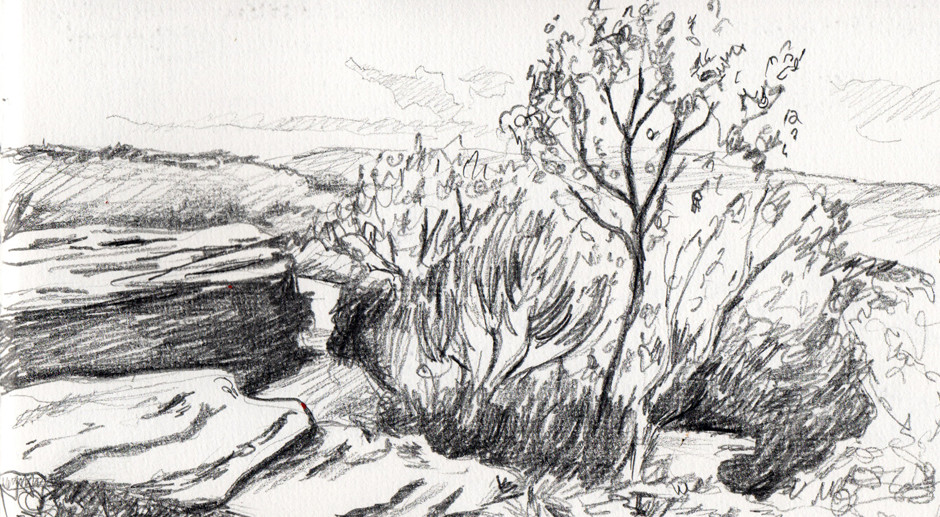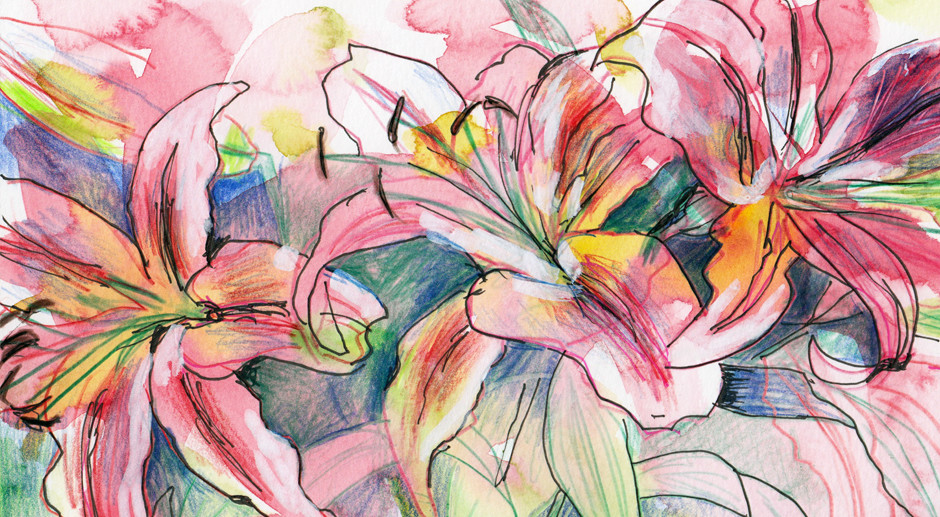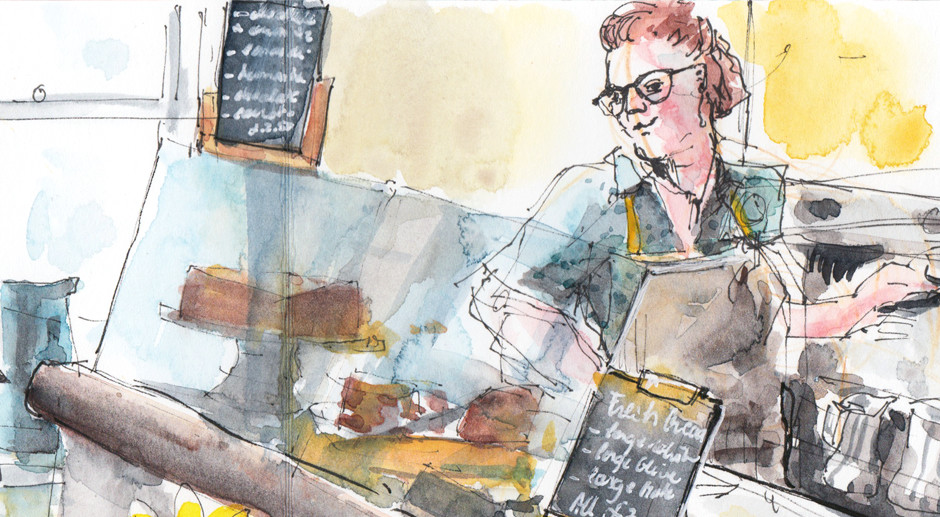Sketching water can be intimidating. Water is transparent, reflects light, moves, splashes or froths. It’s a challenge to capture its ever-changing surface.

No need to panic though, you can get convincing results in a few brush or pen strokes. To render lively water sketches on the go, simplify what you see: focus on shapes, values and movement. With a little practice you’ll find yourself develop a short hand to sketching water.
Reflections and transparency
Still water is reflective. Look at the sky and trees or bushes on the edge of the water and watch their reflections on the water surface. Notice that reflections are mostly shapes of colour without detail.
Clear shallow water, shows the colour of the ground below. Golden sand on the beach, brown soil, grey stones or green moss in rivers.
Visit the same place on different days to see how the water changes with the weather. Look at a lake on a beautiful sunny day and you’ll find its surface is mostly blue. On a dull day and you’ll find the water is dull and grey too.

Look at values and shapes
Break down the main shapes, values and colours on your water surface. Water is fluid and shapes will be fluid to, often with soft edges where colours blend into one another. You can either lay your colour shapes quickly from light to dark directly in watercolour or draw a light pencil outline first.
Keep whites
There are large white or very light coloured patches on most water surfaces. Waterfalls, fast rivers and waves produce white froth or spray. White clouds with reflect as light shapes on still water. Define the light areas in your sketch early. If you work in watercolour, ‘save your whites’ as they will make your water sketches life like.

Sketching water movement
You need to convey a sense of movement and fluidity to make your water sketches believable.
Observe how still water shows small wavy movements in the foreground and a smooth surface in the distance. The further away you are, the less detail and movement shows. Draw the gentle movement of the water on a lake or quiet river with small brush strokes or pen marks.
Sketch waves on the sea, a fast river or waterfall. Look at it long enough to see the patterns that repeat over time. When you understand how it moves, draw with quick gestures of your pen or brush. Your marks should follow the movement of the water to capture the feeling of a wave or fast flowing river.

Try this
When it come to sketching water you will learn best through practice. Try these exercises to improve your skills:
- Draw 2 minutes value thumbnail studies in pencil. This will help you nail reflections quicker when you move to a larger study
- Make fast gestural drawings of moving water




